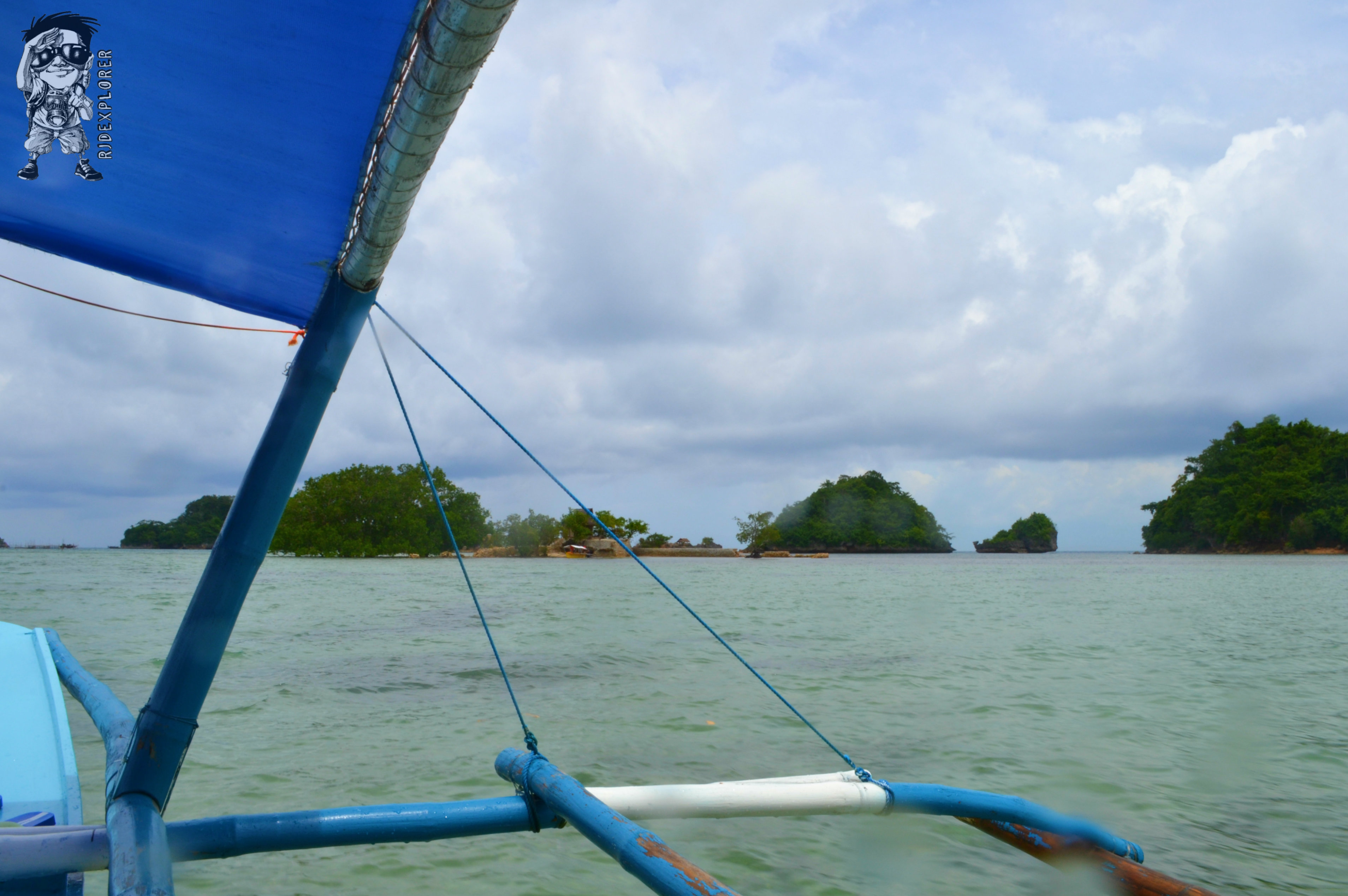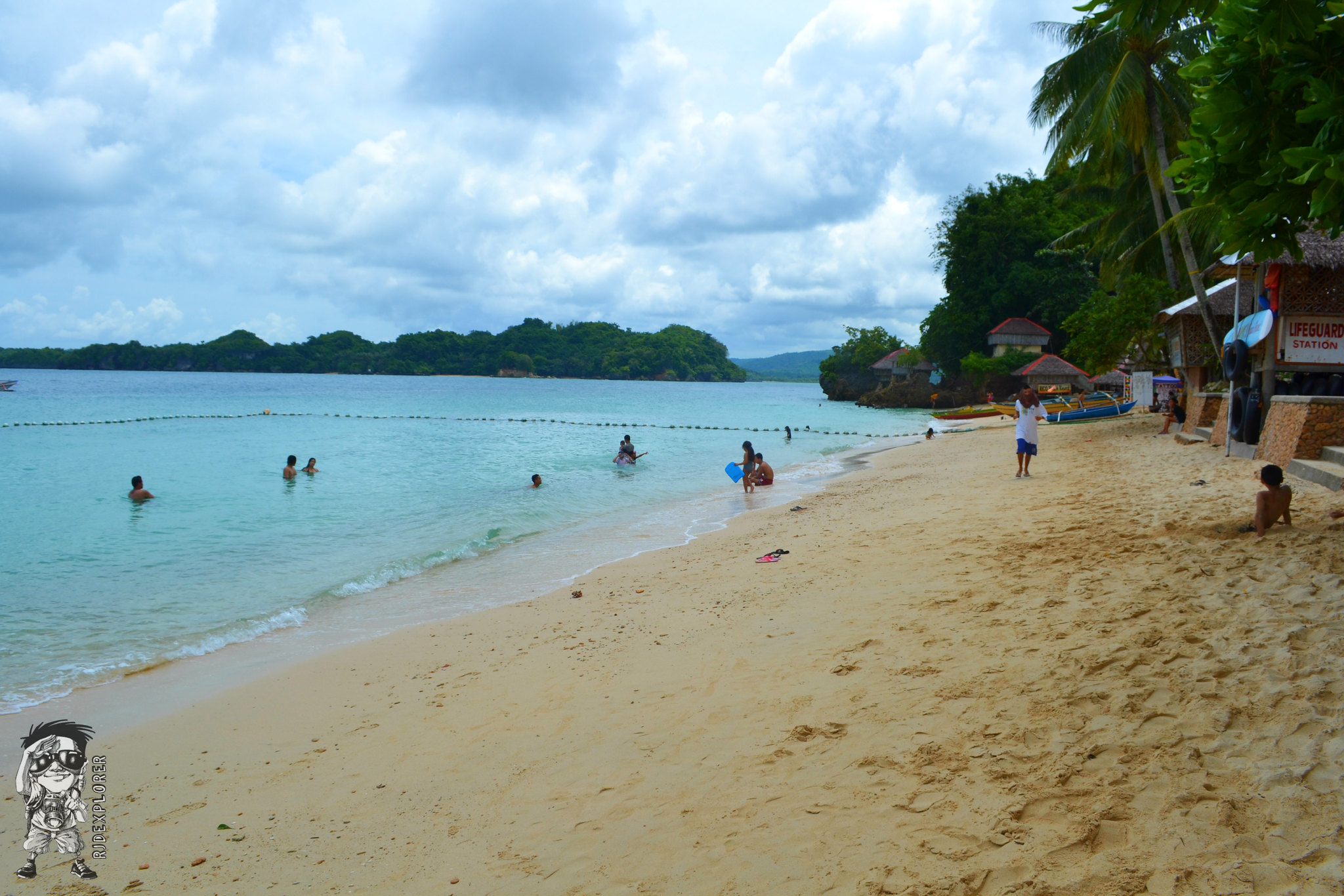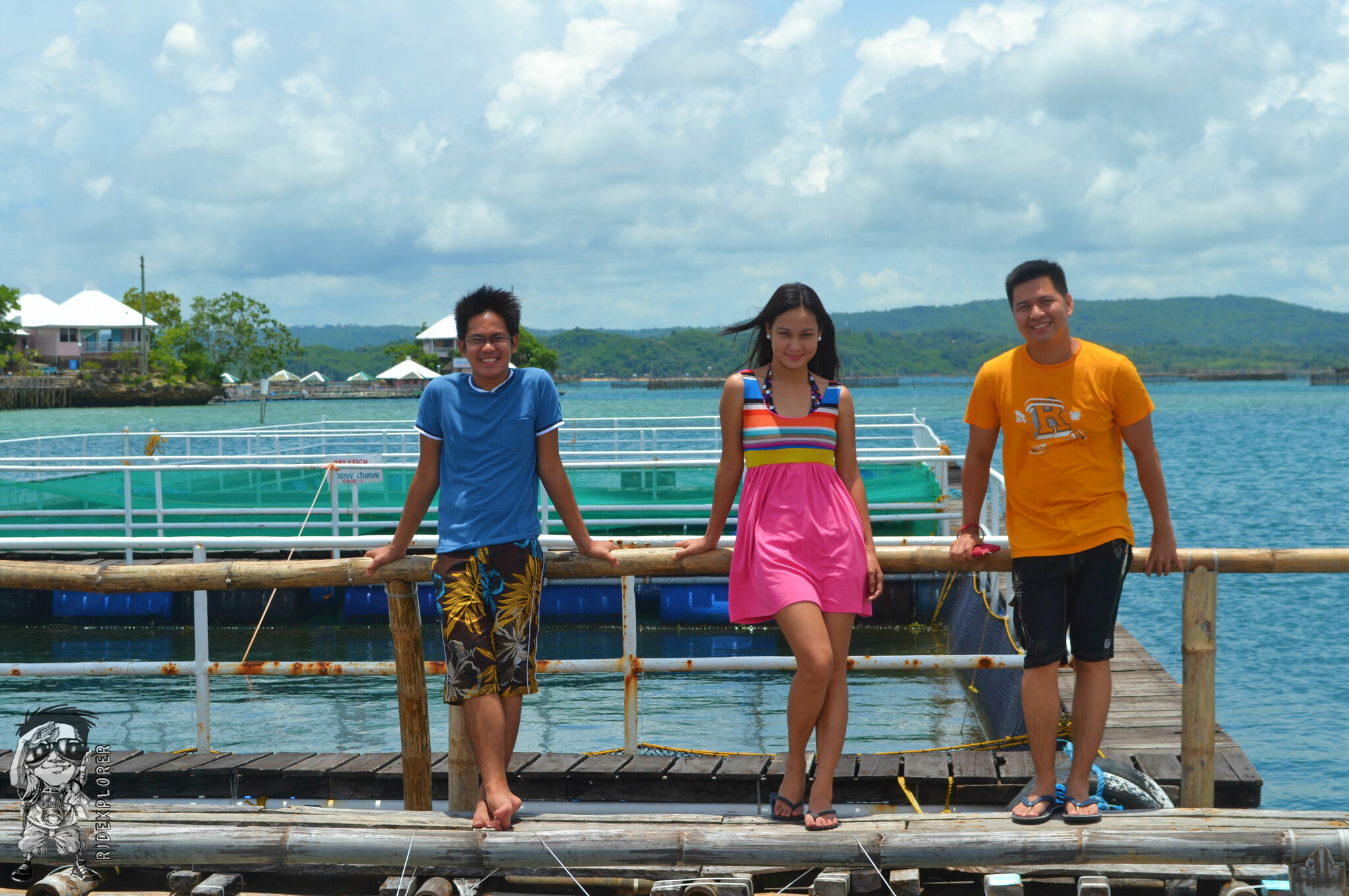When I heard about Guimaras in the past, what I think first are mangoes. I didn’t imagine that island hopping in Guimaras is also an activity for everyone who wants to explore the province. Visiting Guimaras was originally on the second day of my Iloilo-Guimaras-Negros Occidental itinerary. I changed my schedule when I found out that if you’ll be visiting Bacolod from Iloilo, it’s better to do Guimaras first than Iloilo for convenience.

Straight from Iloilo International Airport, I made my way to Ortiz Wharf. Locals told me that waves were larger at that side of the island during those times and advised me to go directly to Parola, where public pump boats are also bound to Guimaras.

Travel time to Jordan Wharf in Guimaras is about 15-20 minutes and fare is Php13. Upon arrival in the province, you need to register at the tourism office for them to monitor the number of tourists visiting the island. After meeting Kuya Charlie and the couple I’m going to join for the Guimaras tours, MJ and Karlo, we embarked an hour tricycle ride to Raymen’s Beach Resort located at Alubihod Beach for the island hopping activity.

Kuya Charlie is the brother of Kuya Cherald, the resident PTB tour guide in Guimaras. I contacted him 3 days before my visit and asked if I can merge with other guests to save some from the tour fees. Luckily, MJ and Karlo accommodated me on their tour.
After paying an entrance fee of Php25 to the Raymen’s Beach Resort’s front desk, we proceeded to the registration of the island hopping. The rate per boat is Php500 for the first hour and Php150 for the succeeding per hours. Weather was so fine when we left Alubihod Beach. Our first destination was the SEAFDEC and before checking out the research center, we dropped by an island having some mangrove trees.

SOUTH EAST ASIAN FISHERIES DEVELOPMENT CENTER (SEAFDEC)
Southeast Asian Fisheries Development Center is actually in Tigbauan, Iloilo but their Aquaculture Department known as Igang Marine Station is located in the southwest portion of Guimaras. It is composed of different islets which are connected by floating bridges. The research station has various fish cages maintaining some species of fish such as Milkfish and Giant Grouper.


Entrance fee is Php25. We were lucky to witness one of the staff feeding the fishes in some pens. Tilapia and galunggong fingerlings were used to feed the bigger fishes and pellets to the smaller ones. I was amazed by the 100+ kilo Giant Grouper also known as the lapu-lapu. A trivia was also given by the staff who shared that the giant groupers have the ability to change their sex after sexual maturity since they are Protogynous Hermaphrodites.

The staff also toured us around the other pens maintained by the marine station. Other species include grouper, sea bass, snapper, pompano, abalone and sandfish. As per my readings, the marine station was established in 1974 for the study on breeding tiger shrimps (Penaeus Monodon) in pens. Recent research being conducted in the station is the verification of soybean meal and soybean protein concentrate as an alternative to fish meal in practical feeds for milkfish grow-out.

We also tried feeding large milkfish wherein the fishes sucked the pellets in our hands. During our visit, some of the staffs were busy collecting data from the seaweeds for research purposes. They were accurately measuring the weight and length of each sea weed. If you remember, Guimaras experienced the worst oil spill on August 2006 when the oil tanker M/T Solar 1 sank during a storm roughly 20 kilometers off the southern coast of Guimaras. The worst effect of what happened can be seen on a lobster which was coated with oil and turned into black preserved on a frame in the floating station.

AVE MARIA ISLAND AND TURTLE ISLAND
Our next destination was the Ave Maria Island located north of Alubihod Beach. It has a patch of beach facing Turtle Island, not so powdery but the water is quite clear. There’s nothing much to do on the island aside from capturing its quaint view. The boatmen were clueless when I asked them why the island was named Ave Maria.


On the other hand, I concluded that Turtle Island was given to that island since a rock formation looks like a sea turtle with its head and flippers. I was wrong when I found out that the island was named Turtle Island because sea turtles visit it to lay eggs.


After navigating and taking pictures around the island, I asked our tour guide where will be our next destination. He said that we can’t proceed to Baras Cave since the water level is high and tourists aren’t allowed to drop by Natago Beach anymore. We just decided to leave Turtle Island and ended the island hopping activity. After the boat traveled for about 10 minutes, a heavy rain poured and the waves got larger. The boatmen changed the route and decided to go back near the shoreline since the boat won’t handle the waves. Our boat almost upturned as the waves and rain continuously pound us.


I prayed for the rain to stop for two reasons: first, I don’t know how to swim and second, I’m anxious for my gadgets. They immediately dropped the anchor and our boat went with the dancing waves. We were soaking wet as we waited for the rain to stop. I closed my eyes and waited for the weather to normalize. When I felt that the waves went normal, I opened my eyes and the skies were already cleared. It was one of the most memorable island hopping experiences I had since I started to travel. We immediately sailed back to Alubihod Beach to officially end our island hopping in Guimaras.







